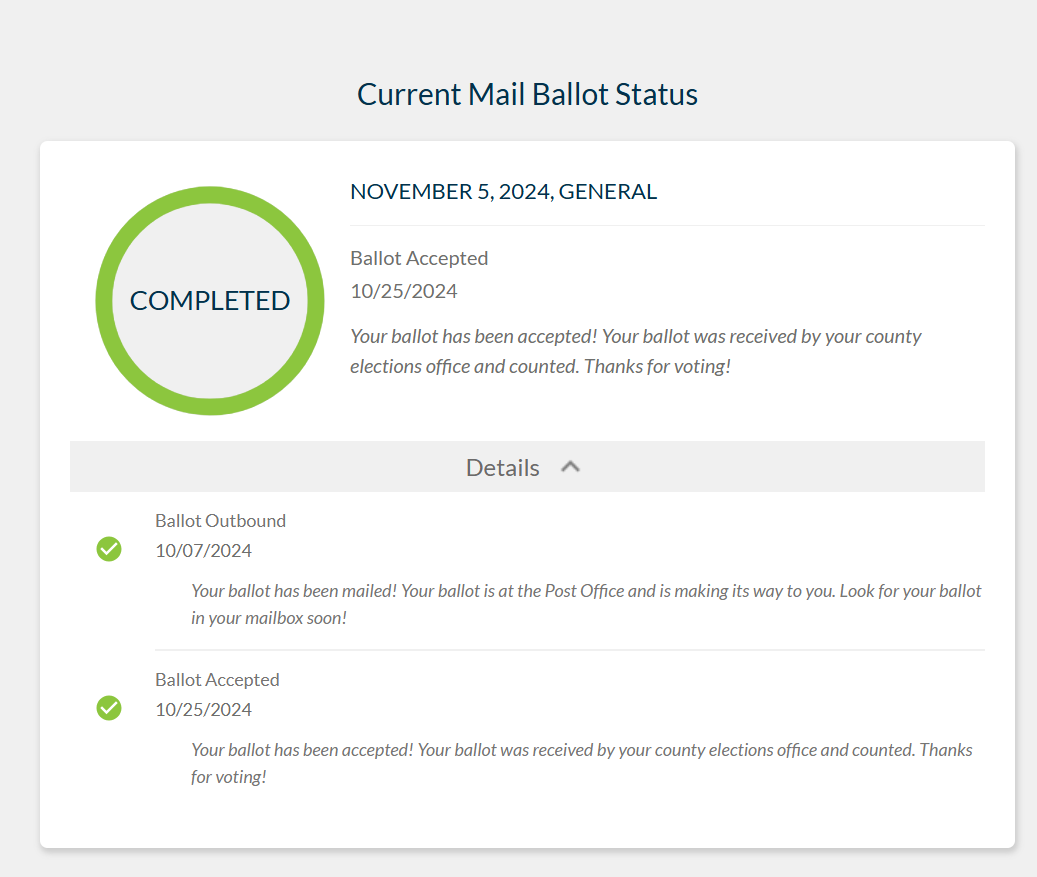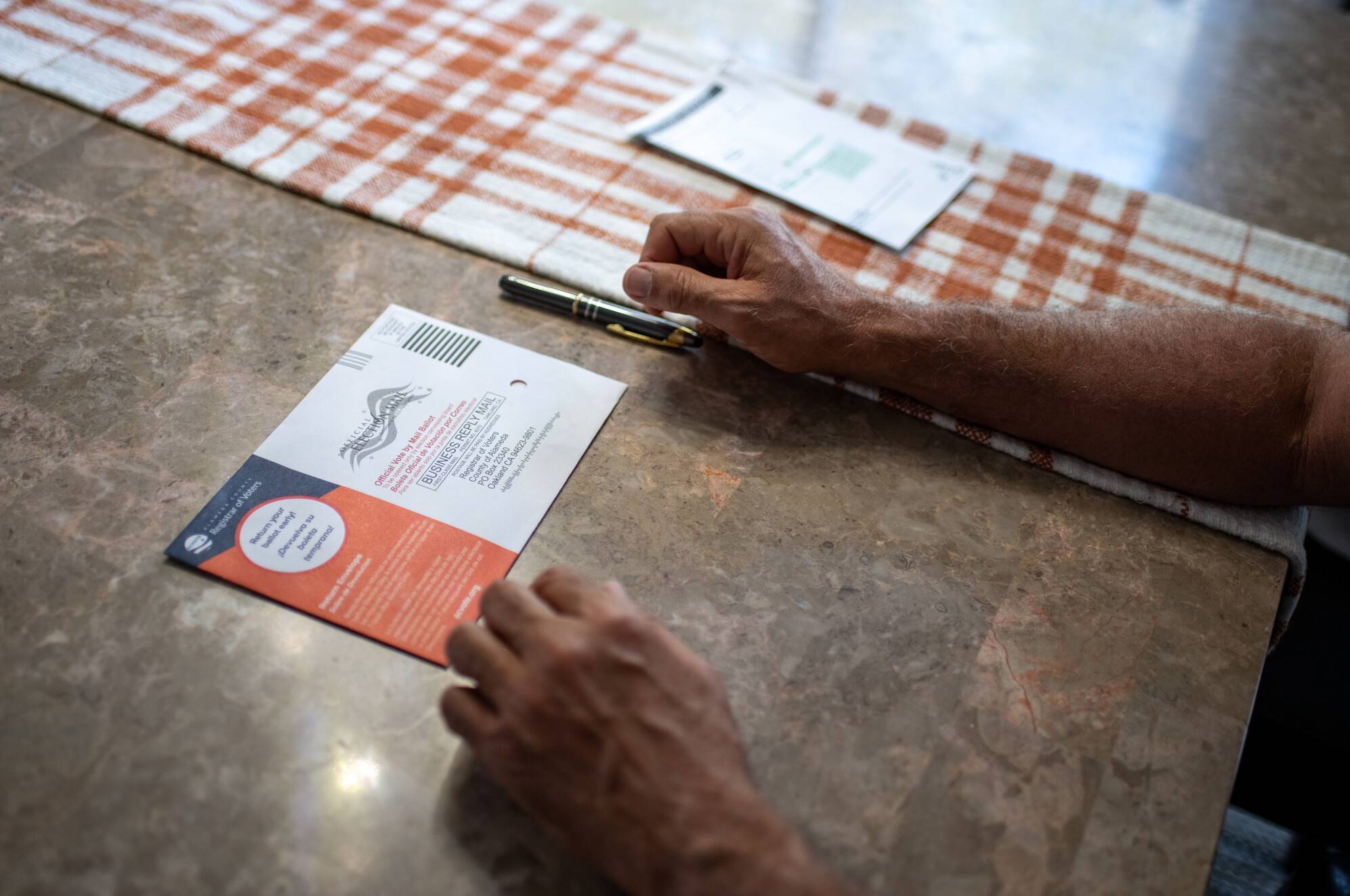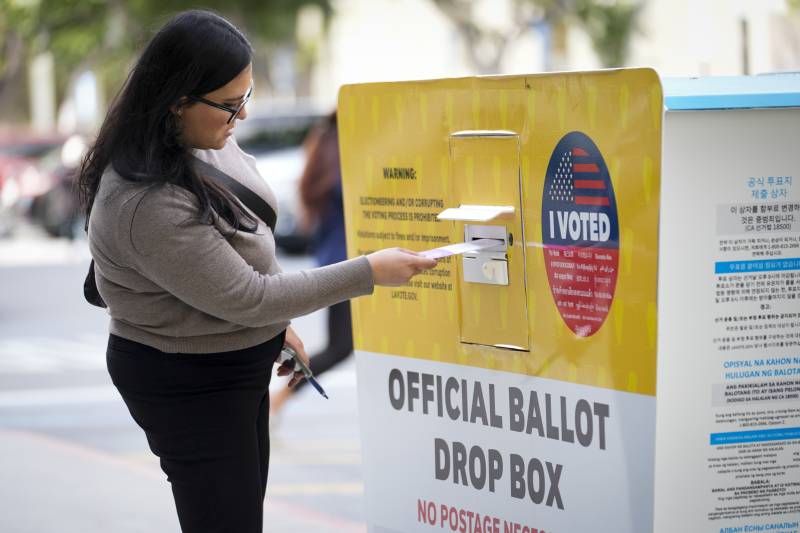Election Day is finally here. And if you’ve already voted — either in person or by submitting your mail-in ballot — all there’s left to do is wait. Especially as the results of the neck-and-neck presidential race between Vice President Kamala Harris and former President Donald Trump may take a while.
One positive, actionable step you can take? Go online and use the state’s “Where’s My Ballot?” tool to confirm that your county election officials received your ballot and will be counted.
This way, you’ll know that your vote and your voice were heard in California, from the presidential election to the state propositions and local measures that can affect the lives of everyone in our communities.
- Jump straight to: Why was my ballot rejected, and what can I do?
You’ll also be alerted in the case that there’s an issue with your ballot, giving you time to work with your local election officials to fix any problems. This process is called “curing” your ballot so that your vote can still be counted, and there’s a whole system in place to help you do that.
Keep reading for everything to know about tracking your ballot and what you can do if the tool flags an issue with counting your vote.
How to use California’s ‘Where’s My Ballot’ tool
Visit the state’s “Where’s My Ballot?” site and put in your details: name, date of birth and ZIP code. If you registered to vote with a mailing address that’s different from your residential address, use your residential address ZIP code.
The tool will then show you the status of your ballot. By hitting “Details,” you can expand the notes and see exactly where your ballot is in the process.

If you see this “Completed” message, your work is done, and you can rest a little easier knowing your ballot is being counted and your voice will be heard in this election.
Help: I’m seeing a message saying my ballot has been ‘Rejected’?
If your ballot shows as ‘Rejected: Curable’, you’ll see a message saying “there is an issue with your returned ballot and it can’t be accepted.”
But as scary as the word “rejected” is, don’t panic: “curable” means that the problem with your ballot is one that can, luckily, be resolved.
Why might a ballot be initially rejected but curable? It’s most likely an issue with your signature: you might have forgotten to sign your ballot envelope entirely or have made a signature that doesn’t match the one on your voter registration. Read more about common issues with signatures on ballots and how they get fixed.

In these cases, your county elections office will reach out to you — almost certainly by mail — to “cure” (resolve) the issue with your ballot so that your vote can be counted after all. For example, if there was an issue with your signature, you’ll be sent a form to sign again, which you’ll then mail back to your county elections office.
Where’s My Ballot will also show you a message telling you that if your ballot has been rejected and is curable, but if you don’t receive “a letter or postcard from your county within 7 days of the election,” you should contact your county elections office yourself by phone or email. Find your county elections office’s contact details in our list.
But even if that mailer from your county elections office doesn’t arrive soon, don’t stress: Your county has a whole month after Election Day — until Dec. 5 — to resolve these kinds of issues with voters and certify the election results.
What if my ballot can’t be cured?
In some cases, Where’s My Ballot will show a message that your ballot has been “Rejected,” with no note about it being curable.
Unfortunately, this happens when your ballot is not received in time or your ballot is missing from the envelope. It means the issue with your ballot can’t be resolved, and your vote will not be counted.
To be counted by your county elections office, your ballot must be postmarked by Election Day (Nov. 5) at the latest and reach them by Nov. 12. One way to ensure your ballot arrives on time to be counted is to submit it into an official elections drop-box, or hand-deliver it at your closest open voting location before polls close at 8 p.m. on Nov. 5. Find where to submit your ballot near you.
Another reason some ballots arrive too late to be counted: voters place them in a USPS mailbox on Election Day that’s already had its last collection for the day, which in many areas is 5 p.m. or earlier. Make sure to check the last pick-up time on a mailbox before dropping in your ballot, and if you’re unsure, deliver it by hand to a voting location or into an official drop-box before polls close instead.


